The steam generated during the boiling process of the liquid can burn you much more severely than the hot substance in the container. Knowing the mechanism of steam burns and the potential consequences can help you deal with this situation correctly. It’s so easy to get lost in finding the right method to eliminate the consequences of a steam burn. What to do at home?
It is very important to understand what to do in case of this type of damage; you need to know about methods of providing immediate first aid and means of eliminating the consequences, so as not to aggravate the situation.
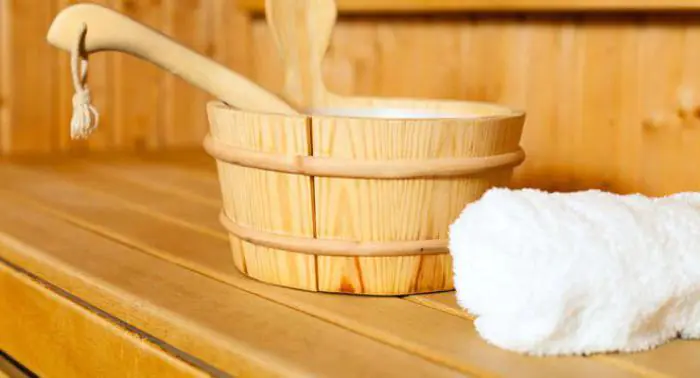
First, it’s worth understanding what degree of severity the injury is, because this indicator will allow you to choose the right treatment for a steam burn.
The resulting thermal burns from steam come in four main degrees of severity.
1st degree
The first degree is characterized by redness of the skin in the area of damage, swelling and pain. This burn disappears after five days.
2nd degree
The second degree of burn from steam is manifested by the fact that after some time bubbles begin to appear filled with plasma liquid, which accumulated during the coagulation of the protein contained on the skin. Redness and swelling are also noted. A burn of this degree disappears after two weeks.
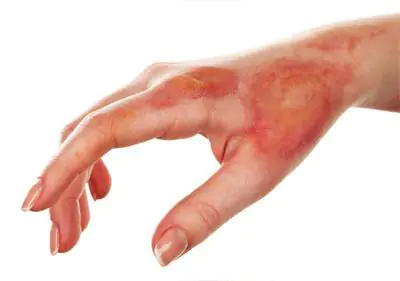
3rd degree
The third degree is characterized by muscle damage because heated substances penetrate the skin tissue. After this, blisters begin to appear, which then burst and form damage over a large area. The healing period is very sluggish and long, because due to open wounds of a steam burn on the hand, for example, suppuration may appear.
4th degree
Fourth degree steam burns can cause deep and serious damage such as charring of the skin. Treatment of the consequences takes place only in a hospital setting and under the strict supervision of specialists. This degree of burn is characterized by a long healing process.
It is easy to understand that the most dangerous are third and fourth degree burns from steam. If the patient has more than 10% of the area damaged, then urgent hospitalization of the person is necessary, and, as a rule, to specialized departments for the treatment of steam burns. What to do at home? More on this later.
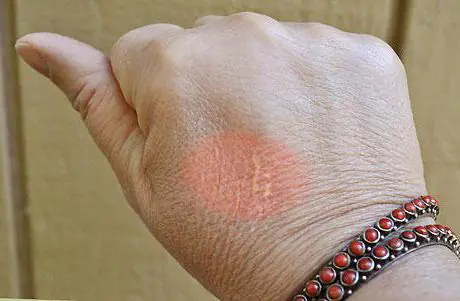
Most often, steam burns are first and second degree. In such cases, providing immediate first aid at home is not difficult. Third- and fourth-degree steam burns typically occur during large-scale industrial accidents or work-related injuries.
Most often, people burn their hands at home with hot boiling water or boiling liquid used in the household.
First aid for steam burns
The procedure for providing first aid for a steam burn is as follows:
- First, you need to free the damaged area from excess clothing, jewelry, watches, etc. If necessary, you should use scissors so as not to cause even more damage to the damaged skin.
- Then it is urgently necessary to cool the damaged area of skin. As a rule, 10-20 minutes under a stream of cold running water directed at the scalded area is sufficient. If suddenly there is no source of water nearby, then you should use ice or other very cold objects. But you should not forget that excessive use of ice can harm the victim by necrosis of epidermal cells, so this cooling process should not last longer than 5-10 minutes. What to do at home in case of a steam burn is of interest to many.
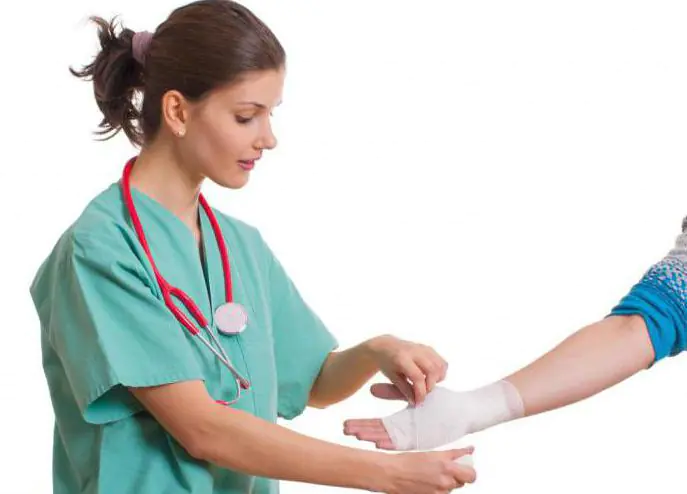
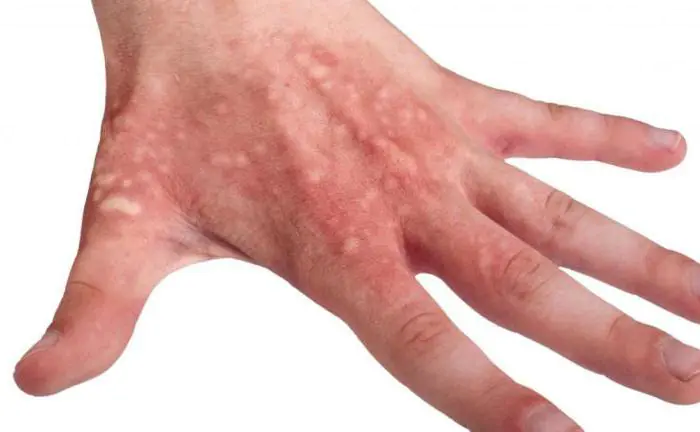
We will consider traditional methods of treating burns below.
Remember that burns should not be lubricated with oil or regular cream. These agents prevent heat from escaping, creating a barrier, which means the duration of wound healing and pain relief will increase. If blisters form as a result of a burn, then under no circumstances should their integrity be damaged, otherwise an infection may enter the wound.
Why is a steam burn more dangerous than a boiling water burn?
- The boiling points of the liquid and the vapor formed from it are different. The temperature of steam can be much higher than water, especially under pressure. That is why a burn from steam is much heavier and stronger, and therefore more dangerous.
- If a hot liquid gets on a person’s body, it cools quickly enough to a temperature of 36.6°C. When steam changes from a gaseous state to a liquid state, condensation is created, which releases even more heat. This is another reason for the danger of steam burns.
Treatment
In addition to traditional conventional treatment methods, many people use folk remedies. Their use, of course, is not enough to combat burns, but they can still help in the healing process. But at the pharmacy you can also buy various ointments or sprays that relieve pain and accelerate tissue regeneration.
Instructions for using Panthenol spray for burns will help you use it correctly.
Folk recipes
Along with pharmaceutical anti-burn drugs, there are a large number of folk recipes and tips for combating injury. Despite the development of the modern industry, the popularity of folk remedies does not decrease, because their great advantage is that everything you need is within walking distance. Let's list some effective folk remedies:
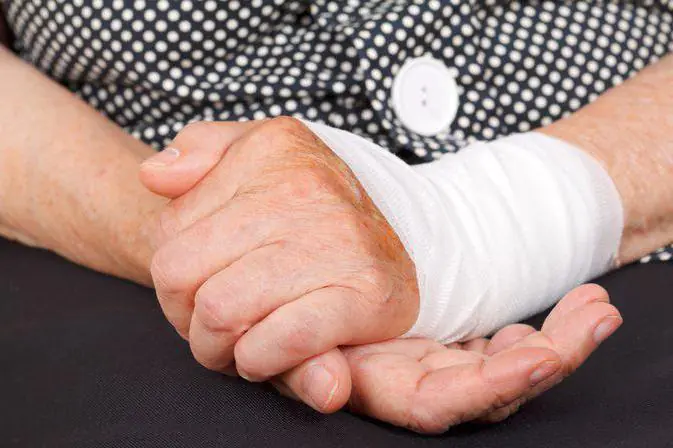
- The foam created by over-beating egg whites is great for applying to a burn.
- Grated raw potatoes and carrots also effectively help with burns. You can add honey to the resulting mass to enhance the effect: 1 teaspoon per 100 g of mass. The resulting mixture is applied to the damaged area of skin.
- You can also lubricate the burn area with aloe juice, released when a plant leaf is cut. Or grind it into a paste and apply it to the wound.
- You can soften a plantain or cabbage leaf and apply it to the damaged area of skin for ten minutes.
- Mix 100 g butter, 20 g linseed oil, 100 g melted natural beeswax. Heat this mixture in a water bath for five minutes and then cool, stirring slowly. A slightly warm ointment should be applied to a gauze bandage and cover the burned area of skin with it. The bandage needs to be changed twice a day.
Pharmaceuticals
Among the anti-burn agents produced by pharmaceutical manufacturers, the following are the most effective and popular:
- “Panthenol” - the main component is dexpanthenol, which can quickly restore the structure of the skin and heal wounds. Instructions for use for “Panthenol spray” for burns are included in each package.
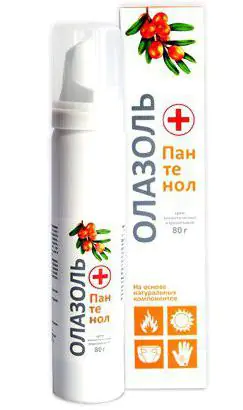
If you receive a burn from steam, you should contact a specialist for help. This type of injury should not be underestimated.
We looked at what to do at home for steam burns.
Steam burn is a type of thermal injury that often occurs in everyday life. Often such an injury is superficial and easily treatable. However, you should not ignore it, because steam can damage the deep layers of the dermis with the threat of infection and scarring. This is due to the fact that the temperature of the vapor can be higher than the temperature of boiling water. In addition, when steam hits the skin, it generates even more heat.
Treatment for steam burns should be urgent. Before taking any measures, you need to determine the scale of the problem and provide first aid.
Classification by severity
Burns from hot steam come in 3 degrees.
- The first (the easiest) is redness, swelling, itching, tingling, pain. Recovery occurs quickly.
- The second (medium) is the formation of blisters with serous fluid. The blisters may burst, causing scabs to appear. The wound heals in about 14 days if there are no complications.
- Third (severe) - peeling of the skin, loss of sensitivity. Rehabilitation is long-term and takes place in a hospital. Scars form.
The severity of the condition also depends on the size of the affected area. A burn of more than 15% of the skin can lead to shock, intoxication, and 50% - to death.
To assess the area of the wound, the “rule of the palm” is used - the palm is equal to 1% of the skin.
Possible affected areas
In everyday life, it is possible to burn any part of the body with steam. Burns of the groin area, eyes, and respiratory tract are especially dangerous. Such injuries must be shown to a specialist.
Skin
The skin most often affected is the hands, face, chest and neck. Less often - legs, back. The area of each anatomical region is a percentage of the entire body that is a multiple of nine. Thus, a burn to the arms, chest or back will be equivalent to 18% of damage, legs - 36%, head and neck - 9%.
Eyes
Thermal burns of the organs of vision are often first or second degree. When foreign objects get into the eyes, they close reflexively, which protects against severe injury. The eyelids can be seriously damaged.
The main symptoms of an eye burn are:
- pain;
- lacrimation;
- photophobia;
- corneal clouding;
- cutting sensations;
- decreased vision.
It is imperative to consult a doctor, only he can provide the correct help.
Larynx
When steam enters the respiratory tract, the muscles of the larynx begin to contract involuntarily. Thanks to this protective reaction, such burns are considered less dangerous. However, during the first 12 hours it is necessary to closely monitor the condition of the victim.. Pulmonary edema and pneumonia may occur.
First aid
Proper organization of first aid is the key to successful treatment. Actions must be carried out in strict sequence:
- cleansing;
- cooling;
- treatment;
- applying a bandage.
Cleansing the surface of the skin
First you need to remove your clothes and jewelry.
If the fabric is stuck, carefully trim it with scissors along the free edges. Under no circumstances should the fabric be torn off. There should be no foreign objects left on the wound.
- infectious infection;
- suppuration;
- long-term rehabilitation.
Cooling the damaged area
It is imperative to reduce the temperature of the injured area. To do this, place the burned area under running water and wrap it in a wet sheet for 10-15 minutes. You can use ice wrapped in a towel, but no more than 5 minutes. Such procedures will significantly reduce pain and soothe the skin.
Antiseptic treatment
After performing the above procedures, the burn site must be disinfected. For antiseptic treatment of injuries, local medications are used:
- potassium permanganate (1 teaspoon per 120 ml of water);
- hydrogen peroxide;
- Chlorhexidine.
Bandage
As a bandage you can use:
The main thing is that the material allows air to pass through, is natural, clean, and dry. There is no need to pre-lubricate the burn with oils or fatty creams - they will interfere with normal heat transfer.
It is prohibited to open or puncture blisters.
Treatment
Skin restoration after a water vapor burn depends on the degree of damage, the promptness of primary care, and further treatment.
Medications
Traditional medicine provides a huge range of specialized medicines.
- Based on dexpanthenol - Panthenol, D-Panthenol, Bepanten, Dexpanthenol. Available in the form of sprays, gels, ointments, creams. The active component has an antimicrobial, analgesic, and wound-healing effect.
- Containing deproteinized dialysate from the blood of healthy dairy calves - Solcoseryl, Actovegin gels. The products activate the regeneration of skin cells.
- Antibiotics - Sintomycin ointment, Levomekol, Oxycort aerosol, Levovinisol spray. Destroy pathogenic microorganisms, prevent inflammation and suppuration.
- Anesthetics - Apollo, Fenistil gels. They are well absorbed and quickly relieve acute pain.
- Herbal preparations - La-Cri cream, Ambulance spray, Rescuer balm. The products are safe, non-addictive, and hypoallergenic. Quickly soothe, disinfect, and nourish the skin.
- Dressing materials - Lioxazin, Branolind-N, Algipor-M, ParaPran. They are wipes impregnated with disinfectant and wound-healing substances.
ethnoscience
At home, you can use traditional medicine, which offers a large number of recipes for treating burn wounds.
- Propolis. The product disinfects, relieves pain, and restores tissue. To prepare the ointment, add 20 g of propolis to 100 ml of vegetable oil, simmer in a water bath until a homogeneous consistency is formed, and filter. Lubricate the wound 2-4 times daily.
- Aloe. It cools the affected area well, relieves inflammation, and regenerates the skin. You can use fresh juice for rubbing, and also apply cut leaves under the bandage several times a day.
- Beeswax ointment. Quickly heals steam burns without leaving scars. To prepare the ointment, you need to melt 50 g of the main component in a water bath, add goose fat and butter in equal proportions, and mix. After cooling, the product is ready for use. Apply a thin layer several times a day.
- Yolk. The chicken yolk is left on the skin for 15-20 minutes. It has nourishing and wound-healing properties. To enhance the effect, you can add honey.
- Potato. Quickly lowers temperature and prevents scar formation. The vegetable is grated on a fine grater and used as a compress.
- Onion. The finely grated vegetable is mixed with linseed oil and applied under a bandage, which must be changed 2-3 times a day.
- Sea buckthorn. Sea buckthorn oil is a proven remedy for the treatment of skin lesions. Used after acute symptoms are relieved. Effectively heals wounds and removes inflammation.
What not to do
Wrong actions can lead to complications and aggravate the situation. To avoid unpleasant consequences, you must remember about unwanted and prohibited manipulations when providing assistance to the victim:
- tearing off stuck clothes;
- use of non-sterile products;
- puncturing blisters;
- use of drugs for other purposes;
- applying oils, fatty creams, fermented milk products;
- surface disinfection with alcohol-containing solutions (iodine, brilliant green).
When should you consult a doctor?
If a 2-3 degree burn has been determined and more than 10% of the skin is affected, you must immediately call an ambulance.
The same should be done when a child, pregnant woman or elderly person is injured. Open wounds, injuries to the head, eyes, respiratory tract, and groin require mandatory medical intervention, regardless of the extent of the injury.
In this article we will answer the question of how to treat a burn from steam or boiling water. You will learn how to provide first aid for burns yourself and what not to do.
Get acquainted with folk recipes that relieve pain and promote rapid healing. We'll tell you how to treat and how to treat your skin at home.
In case of a slight household burn (boiling water, steam, touching a hot surface), hold the damaged area under running cold water. This will reduce the temperature of the affected tissues.
Cold water relieves pain, removes redness, and prevents the formation of blisters or wounds.
Providing assistance at home
You can cope with a burn yourself if it is less than 5% of the body surface.
A thermal burn with boiling water or steam sometimes causes more harm than a fire burn. Within 5-10 seconds of exposure to steam on the skin, most of the cells are damaged.
- If your hand is burned, remove clothing from the damaged area. First aid involves cooling the painful areas under running cold water. Do not use ice, there is a risk of making the situation worse.
- Disinfect the burn site. Regular soap is suitable for these purposes. Lather the affected area and rinse with cold water.
- Apply the anti-burn agent using gentle movements. Do not rub the ointment, apply a cotton pad soaked in the medicine.
What not to do
Many people apply vegetable oil to their burned skin. This cannot be done; the fat in the product retains heat, which leads to inflammation of the skin.
You cannot puncture the blisters that have formed, as you risk causing an infection. If blisters interfere with life in the truest sense of the word, consult a doctor; perhaps he will resort to piercing, observing all sanitary rules and regulations.
Do not treat affected areas with liquids containing alcohol. The active components of the product can cause inflammation.
Folk remedies for steam burns
Aloe vera, which has an anti-inflammatory effect, is considered an effective remedy for burns.
Apply washed and cut aloe leaves to the affected area. They relieve inflammation and pain.
What to apply to a burn
- Propolis is considered another anti-burn agent. Soak a gauze bandage or bandage in propolis and apply to the affected areas. The product dries quickly under the influence of body temperature. For effectiveness, change the bandage periodically.
- Raw egg yolk will help cope with the burn. Whisk and massage into skin with light movements.
- Make potato lotions. Grate the potatoes on a fine grater, wrap in gauze and apply to the skin. Add a small amount of honey, this will increase the effectiveness of the procedure.
- Plantain leaves are applied to the skin or applied overnight. The plant has wound-healing and antimicrobial effects.
- Sea buckthorn oil can treat even third degree burns. Apply compresses with sea buckthorn to the affected areas, periodically changing the bandages.
Aloe recipe
Ingredients:
- Crushed aloe leaves – 100 g.
- Boiled water – 100 g.
- Glycerin – 100 g.
- Lemon juice – one teaspoon.
How to cook: Combine aloe and water in a container and beat with a mixer. Add lemon juice and glycerin. Place the mixture in a cool place and pass through a sieve before use.
How to use: Apply to burn areas for 20 minutes, rinse with water at room temperature. Store in the refrigerator.
Result: An effective remedy for treating minor burns.
Regenerating agent
Ingredients:
- Oatmeal jelly – 100 ml.
- Potato starch – 20 g.
How to cook: Mix the ingredients until smooth.
How to use: Apply the product to the affected area for 20 minutes. Repeat the procedure every 4 hours.
Result: Heals, restores, relieves pain.
Anti-burn ointment recipe
Ingredients:
- Butter – 100 g.
- Beeswax –40 g.
- Flaxseed oil – 20 g.
How to cook: Melt the butter in a metal container, add wax and linseed oil. Stir until smooth.
How to use: Apply the ointment to a bandage and periodically apply to painful areas.
Result: Prevents the formation of bubbles.
If bubbles do appear, the following recipe will help solve the problem.
Honey compress
Ingredients:
- Rhubarb stalk - teaspoon.
- Honey - a teaspoon.
How to cook: Grind the rhubarb stalk until pulpy. Add liquid honey, stir.
How to use: Apply the mixture through a gauze bandage for half an hour, several times a day.
Result: The compress heals the tissue and removes blisters.
Calling an ambulance
There are times when calling an ambulance is inevitable. So, call your doctor if:
- A small child, a pregnant woman or an elderly person has been burned.
- The area of damaged areas is more than 5%.
- The burn is the size of your palm.
- The head, face, eyes and groin area were injured.
Degrees of burns
- Minor burns can be treated on your own; they are classified as first degree injuries.
- For second degree burns, complex treatment is prescribed. Such damage is accompanied by the appearance of blisters filled with liquid. It takes several weeks to heal.
The specialist prescribes vitamins and external preparations, the action of which is aimed at healing wounds, tissue regeneration, and relieving inflammatory processes. - The third degree is considered the most severe, manifested by the destruction of several layers of skin and an increase in temperature.
You need to consult a doctor if the pain does not go away for several days, the affected areas are inflamed, and the tissues do not heal.
What to remember
- If you are burned by steam, cool your skin immediately.
- Treat the skin area, use folk remedies and methods.
- Remove the bandages from time to time to allow the skin to breathe.
- If the pain persists and the wound does not heal, consult a doctor.
Education: Diploma in General Medicine and Therapy received from the University named after N. I. Pirogov (2005 and 2006).



